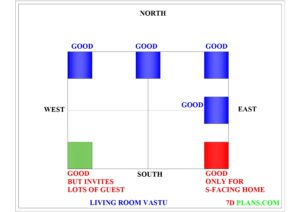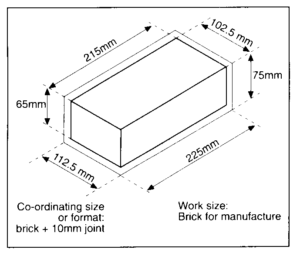VASTU FOR LIVING OR DRAWING ROOM:-
A living room is a place of gathering – the place where you entertain your guests, socialize with people, and enjoy and spend immeasurable quality time with your family.
In short, it is the place where most of your “sweet memories” are made.
For these reasons, I can safely state that a living room has dual functions:
1. It is an interface where you socialize with outside people, such as guests, friends and distant relatives.
2. It’s also a place where you share private time with your family doing activities, such as watching TV, family discussions and anything and everything that you and your family love to do together.
Since a living room serves dual purposes in a home, hence it’s very important to make it as per the rules and regulations of Vastu shastra.
If you want to know “why”, then read the next section.
In most cases the entrance – or main door – of a home leads directly to the drawing/living room; the main door of a home is the place from where energy – positive or negative – enters the home; hence it’s very important to make the home entrance a Vastu compliant one.
LIVING ROOM VASTU – WHY IS IT IMPORTANT?

Since you have now become aware of the dual purposes of a living room, you are in a better position to understand and contemplate the reasons to have a living room that follows Vastu shastra.
Below, I have provided some examples that will make you consider doing Vastu for your living room.
As mentioned earlier that it’s the living room where guests are entertained in a home; some of them have positive feelings – or energy – whereas others have negative ones (Hmm, there are all kinds of people in this world).
Now, imagine a guest, who has negative feelings for you and your family, entering your home and spending time in your living room.
Where is the guest dropping all the negative energy?
RIGHT IN YOUR LIVING ROOM!!
What happens to “this negative energy” if your living room is not “equipped” to get rid of it?
It spreads to the entire home and affects you and your family is – obviously – negative ways.
I will tell you one more way of negative energy entering your home.
The main door of a home – mostly – leads to the living room; hence any negative energy which – somehow – crosses the main door, enters the living room directly.
Since you and your family spend time in the living room – with each other and with people outside of the family – hence you all get impacted by negative energies present in the living room.
Since you have now read two main – but easily possible – scenarios of negative energies entering your home, I believe that you now understand how vulnerable a living room becomes if it’s not able to dispose of negative energies and attract and simultaneously enhance positive ones – which is why we do Vastu.
Hence, if the living room in your home is not as per Vastu shastra; then I sincerely urge you to read the next section of this article to know and understand all the important steps that you need to take to make your living room a Vastu compliant one.
Vastu for Living Room – How You Can Do It?
This part of the article is dedicated to providing you with “the actions” which you MUST take to make the living room in your home a Vastu compliant one.
Understand that this is a two-step process.
In the first step, I want to take a look at the image below so that you understand the best location where you need to locate the drawing room in your home.
Since you have seen – and I believe have completely understood – the best location(s) for a living room in a home, you are now ready to take the second step towards making your living room a Vastu compliant one.
The second – and final – a step which you need to follow is to read and follow all the below mentioned Vastu tips for the living room.
Living Room Vastu Tips:
1. As per Vastu Construct a living room in the East (not in the South-East corner, except for South facing houses) or in the North.
2. As per Vastu A living room is more beneficial in the North direction.
3. As per Vastu The North-West living room is also good; since the presiding element of the North-West part of a home is “Air”, the guests in this drawing-room start to feel restless after some time and tend to leave early. This could be a great site of living area for families who want to avoid late-night parties and get-togethers.
4. As per Vastu God presides North-East of the house and this is one of the ideal locations for a living room, however, it’s better suited for a pooja or prayer room.
5. As per Vastu A living room in the North brings a lot of wealth and health to the entire family.
6. As per Vastu South-West located living room makes your guests feel at home and they stick to your home for a long time. If you – and your family – have a very active social life and just love your guests to stay too long (which could be difficult to manage at times) then you can locate your living room here. However, this place is best suited for Master Bedroom.
7. As per Vastu Living area floor should slope toward East or North.
8. As per Vastu The ceiling of the living area, if sloping towards the East or North is good.
9. As per Vastu Have the door of the living room in the East or North as they are very auspicious and bring wealth, health and overall progress.
10. As per Vastu South, North-East or South-East entrance indicates success but then it takes a lot of hard work to achieve.
11. As per Vastu West entrance to the living area is good for scholars and researchers.
12. As per Vastu Living area’s North-West entrance supports development in all areas of life.
13. As per Vastu South entrance for the living area is inauspicious; just shift the entrance to the West for better results.
14. As per Vastu Within the living area keep internal furniture, articles and heavy things on the West or Southside. If there is no option, then use a base of 1-3 inches in height to keep furniture in the North or North-East.
15. As per Vastu The head of the family, in the living area, should sit facing East or North so that he remains in command and guests are not able to dominate him.
16. As per Vastu Put the TV in the South-East corner and not in the North-East corner.
17. As per Vastu If TV is in the South-West corner, then it will break down often.
18. As per Vastu If television is in the North-West corner then the family will waste a lot of precious time watching TV only.
19. As per Vastu Keep the telephone in the East, South-East or North.
20. As per Vastu Do not keep the telephone in South-West or North-West.
21. As per Vastu Place air cooler and air conditioner are in the West, North-West or East and not in the South-East.
22. As per Vastu You can hang portraits of Gods or some beautiful paintings on the North-East wall or corner.
23. As per Vastu Do not hang any portrait depicting negative energy e.g. war, crime, weeping etc in the living area (actually avoid them anywhere in a home).
24. As per Vastu Use white, light yellow, blue or green colours for living room walls.
25. As per Vastu Avoid red or black for living area wall colours.
26. As per Vastu Keep square or rectangular furniture in the living area and avoid circular, oval or any other shape of furniture (this applies to furniture in the entire home).
27. As per Vastu Provide a staircase in the South, West or South-West corner of the living area.
28. As per Vastu Put light curtains on North-East windows and doors and heavy curtains on the South-West (this is applicable anywhere in a home) of the living area.
29. As per Vastu Keep the North-East corner of the living area clean and empty if possible. Also, to make things better, keep some healthy plants in this corner.
30. As per Vastu Never keep artificial flowers, dried flowers (they attract misfortune), cactus/cacti or bonsai plants (have a negative influence on finance and career) and are inauspicious.
31. As per Vastu Hang a chandelier in the South or West of the living area; do not hang anything in the centre.
32. As per Vastu Lit the living area is bright with soothing lights.
33. As per Vastu Keep a fish aquarium in the East, North or North-East of the living area. In Vastu shastra, a fish aquarium is considered a very powerful tool – so powerful that it acts as a remedy for many Vastu defects. But, you must use a fish aquarium as per the rules and guidelines of Vastu; else it may ruin all the happiness in your home.
34. As per Vastu If there is an error in the North-West corner then placing an aquarium will drop that issue.
35. As per Vastu Never keep an aquarium in the South as draws all positive energy out of the home.
36. As per Vastu You can place a water fountain in the North.
Armed with these simple but very powerful Vastu tips for living room; as you now know the implications of not having a Vastu compliant living room, I sincerely trust that you will leave no stone unturned to make your living room a Vastu compliant one.





